- Home
- Peter Ackroyd
Wilkie Collins
Wilkie Collins Read online
ALSO BY PETER ACKROYD
Fiction
The Great Fire of London
The Last Testament of Oscar Wilde
Hawksmoor
Chatterton
First Light
English Music
The House of Doctor Dee
Dan Leno and the Limehouse Golem
Milton in America
The Plato Papers
The Clerkenwell Tales
The Lambs of London
The Fall of Troy
The Casebook of Victor Frankenstein
Three Brothers
Nonfiction
Dressing Up: Transvestism and Drag: The History of an Obsession
London: The Biography
Albion: The Origins of the English Imagination
Venice: Pure City
London Under
Biography
Ezra Pound and His World
T. S. Eliot
Dickens
Blake
The Life of Thomas More
Shakespeare: The Biography
Charlie Chaplin: A Brief Life
Ackroyd’s Brief Lives
Chaucer
J. M. W. Turner
Newton
Poe: A Life Cut Short
Poetry
Ouch!
The Diversions of Purley and Other Poems
Criticism
Notes for a New Culture
The Collection: Journalism, Reviews, Essays, Short Stories, Lectures (edited by Thomas Wright)
Copyright © 2012 by Peter Ackroyd
All rights reserved. Published in the United States by Nan A. Talese / Doubleday, a division of Penguin Random House LLC, New York, and distributed in Canada by Random House of Canada, a division of Penguin Random House Ltd., Toronto. Originally published in Great Britain by Chatto & Windus, an imprint of Penguin Random House Ltd., London, in 2012.
www.nanatalese.com
DOUBLEDAY is a registered trademark of Penguin Random House LLC. Nan A. Talese and the colophon are trademarks of Penguin Random House LLC.
Cover image: Wilkie Collins portrait from “My Miscellanies,” London, 1875. Iberfoto/SuperStock
Library of Congress Cataloging-in-Publication Data
Ackroyd, Peter, 1949–
Wilkie Collins / Peter Ackroyd.—First United States edition.
pages cm.—(Ackroyd’s brief lives)
ISBN 978-0-385-53739-1 (hardcover) ISBN 978-0-385-53740-7 (eBook)
1. Collins, Wilkie, 1824–1889. 2. Novelists, English—19th century—Biography. I. Title.
PR4496.A53 2015
823′.8—dc23
[B] 2014043502
eBook ISBN 9780385537391
v4.1
a
CONTENTS
Cover
Also by Peter Ackroyd
Title Page
Copyright
List of Illustrations
1. The Omni
2. The Family
3. The Pilgrimage
4. First Light
5. Triumph
6. Modern Times
7. On the Road
8. The Secret Life
9. On the Staff
10. The Woman
11. Hot Brandy and Water
12. The Chain
13. The Stone
14. A Change of Heart
15. Bags of Blood
16. Another Country
17. Clap-Trap
18. Breast Pangs
19. That’s Me
20. A Postscript
The Major Works of Wilkie Collins
Bibliography
A Note About the Author
Illustrations
LIST OF ILLUSTRATIONS
pai1.1 William Collins, engraving from the portrait by John Linnell. Frontispiece to Memoirs of the Life of William Collins, Esq., RA, 1848
pai1.2 Harriet Collins, 1831, by John Linnell. Courtesy of Faith Clarke
pai1.3 Wilkie Collins aged one, probably drawn by his father.
pai1.4 Charles Collins, 1850. Dickens House Museum
pai1.5 Wilkie Collins in 1857. Photograph by Herbert Watkins.
pai1.6 Charles Dickens in 1852. Dickens House Museum
pai1.7 Charles Fechter by Sarony, 1870. MSCUA, University of Washington Libraries
pai1.8 The cast of The Frozen Deep, 1857. Dickens House Museum
pai1.9 John Millais, Frontispiece to No Name, 1864.
pai1.10 Arthur Hopkins, “She was not alone in her room,” The Haunted Hotel, 1889
pai1.11 Wilkie with Martha Rudd. Courtesy of Faith Clarke
pai1.12 Caroline Graves in the 1870s. Courtesy of Faith Clarke
pai1.13 Ramsgate harbour. Kent County Council.
pai1.14 Nannie Wynne in the 1880s.
pai1.15 Wilkie in the 1880s. Photograph by Alexander Bassano. Paul Lewis Collection
Playbill for the opening performance of The Frozen Deep at Tavistock House, January 1857
CHAPTER ONE
The Omni
The peculiar appearance of Mr. Wilkie Collins made him stand out in an “omni,” as the London bus was frequently called. At five feet and six inches he was relatively short even for the 1850s and 1860s. His head was too large for his body; his arms and his legs were a little too short, while his hands and feet were too small and considered to be “rather like a woman’s.” There was a large bump on his right temple as a result of a gynaecological accident; it was sometimes called “a swelling of the frontal bone.”
He was always aware of his oddity and declared that nature had in his case been “a bad artist”; he believed that his high shoulders, and his generally broad body, were “quite out of all proportion” to his large and intellectual head. He was extremely short-sighted, and always wore spectacles. In his thirties he grew a beard, thus lending much-needed symmetry to his face. In his published work he often draws attention to physical abnormalities that give a clue to distinctive character; he was very interested in what was then the science of physiognomy, but he also mentions among other ailments epilepsy, spinal defects, facial deformities, and paralysis of the limbs.
His friend, Holman-Hunt, gave an account of his demeanour. When welcoming a guest he would rock himself backwards and forwards while clasping his knees, and “ask with deep concern where you came from last.” Someone else described “a nervous movement of his knees, as if he were soothing invisible babies.” He could not stay still. When he sensed an attack of gout coming on, an ailment that afflicted him for much of his life, his response was “his fidgeting with one foot upon the floor.” When in repose, however, his face had a dreaming or reflective aspect; but in conversations his bright eyes behind his gold-rimmed spectacles fixed you like gimlets.
He wore colourful clothes, like many of his contemporaries, as if playing a certain part in the great general drama of life. His doctor, Frank Beard, explained that he would sometimes sit down to dinner “in a light camel hair or tweed suit, with a broad pink or blue striped shirt, and perhaps a red tie.” When photographed in New York, on a reading tour, he was dressed in a florid fur coat. He was recorded wearing “a linen shirt dashed with great, gory squares, cut low in the neck, and held together with a rakishly tied Belcher scarf” together with a bright blue jacket and waistcoat. He also owned a range of cravats, striped and spotted. Out for a walk in London one afternoon in his late fifties, wearing a smart paletot coat usually reserved for young men, he overheard a woman say to her companion, “To think of a man wearing such a coat as that—at his time of life!” Yet his preferred costume, when he was working quietly at home, was a dressing gown.
He was universally known for his amiability and general good humour; he was perhaps the sweetest-tempered of all the Victorian n
ovelists. He did not have the hard and driven quality of Charles Dickens; he did not have the brooding and majestic air of George Eliot. He was “the least posé public man I ever met,” according to one companion; he was kind and ever approachable. He had no “side,” and seems to have been adored by the women of his acquaintance for his sly sense of fun and effortless charm. He set men at their ease with his cheerfulness and what was described as “the buoyancy of a youthful spirit.” He said of himself that dignity was not part of his nature. His description of one of his characters might be applied to him, that he was one of those men “whom everybody shakes hands with, and nobody bows to, on a first introduction.” He was always known simply as Wilkie, not as Collins or Mr. Collins.
—
The bus was known as the “omni” because it catered for everyone, and thus can be seen as an indispensable preliminary to the Parliamentary Reform Acts of 1867 and 1870. He liked to ride on the omnibus because he wished to immerse himself in what he called “the Actual,” as opposed to “the Ideal.” Among the routes adjoining his neighbourhood he might have taken that from the Yorkshire Stingo at Paddington to the Bank of England, passing along the New Road (now known as the Marylebone Road), Somers Town and the City Road.
It was a relatively expensive mode of transport—a shilling for a full ticket—but newspapers and magazines were provided free of charge. The bus could accommodate twenty-two passengers and Collins once wrote that “an omnibus has always appeared to be a perambulatory exhibition room of the eccentricities of human nature”; he liked to scrutinise “merely the different methods of getting into the vehicle and taking their seats, adopted by different people.” He saw the fashionable young woman in intensely dyed crinoline; he saw the banker, dressed in clerical black, wearing a stovepipe hat. He observed the stout gentleman in a white neckcloth, and the “shabby-genteel” man with a green bag. He may have noticed how the stout gentleman gave a poke to the “cad,” or conductor, with his umbrella for some infringement of the rules. He saw all the anxious, nervous, exhausted and ailing people of the city. In one of his novels, Basil, a young man falls helplessly in love with a girl he has glimpsed on the “omni.”
One reviewer described his fiction as “stuffed full” with incidents “as an omnibus is with passengers on a rainy day.” Safely ensconced in his seat he would have heard all the phrases of the age. It struck me all of a heap. I am dead beat. He was in a blue funk. I hardly know whether I’m on my head or my heels. He’s spooney enough to like lemonade. He’s a rum’un. That shook him up a bit. Tuck in. Ta-ta, sergeant, ta-ta.
He knew the route of the Paddington omnibus by heart, since for most of his life he lived in the neighbourhood of the New Road. Like most Londoners of the period he remained in the area with which he was familiar. Londoners had some inner guide to the nature of their terrain; they knew where to find the dry soil or the damp soil; they knew of the windy quarters and the sultry quarters; they recognised which neighbourhoods were healthy, and which were diseased.
He lived, apart from some residences of his childhood years, in a small patch of territory bounded by Oxford Street in the south and Regent’s Park in the north; the western frontier lies on the Edgware Road and the eastern is formed by Great Portland Street. Scenes from this territory are to be found in much of his fiction, with the immediate neighbourhood of Regent’s Park as a particular attraction. Marylebone is in fact one of the most respectable, and also one of the most dreary, areas of London. Most of it is resolutely bourgeois, with solid stuccoed or red brick houses ranged along grimly patterned streets. Yet Collins, of all people, realised that strange crimes and furtive passions might lie concealed behind the brick and the plaster.
The most sensational crimes of the 1860s involved fraud, or blackmail, or poison, where a respectable façade was most important; these were also the issues that arrested Collins’s attention. Thomas Hardy characterised the most successful fiction of the period as containing “murder, blackmail, illegitimacy, impersonation, eavesdropping, multiple secrets, a suggestion of bigamy, amateur and professional detectives.” It is the best possible summary of the art of Wilkie Collins. He celebrated what he described, in The Woman in White, as “the idea of something hidden below the surface.” In the process he created a fragile world racked with nervous tension, where the conventions of ordinary life concealed the burden of secrets and of irregular relationships. This was a world of confused identities, both sexual and social, in which no one had a secure home. This was the world of London.
CHAPTER TWO
The Family
He came into the Marylebone world on 8 January 1824; his place of birth was a house in New Cavendish Street, and he returned to that street with a mistress thirty-five years later. He was baptised at the parish church of St. Mary-Le-Bone with the name of William Wilkie Collins, and throughout his childhood was known as Willy. It may be on the occasion of his baptism that his godfather, the painter Sir David Wilkie, astonished the family by peering into the baby’s eyes and exclaiming that “he sees!” As Collins remarked later, Sir David Wilkie was more familiar with puppies and kittens than with infants.
The house in New Cavendish Street was shared with his paternal grandmother and uncle; since the Victorians were preoccupied with theories of heredity, and of acquired characteristics, it may be worth tracing Collins’s own ancestry. It was believed in the family that they were descended from Samuel Collins, a seventeenth-century anatomist, and from the same family as William Collins, the once celebrated eighteenth-century poet. A more immediate influence may be found in his paternal grandfather, William Collins the elder. He was a native of County Wicklow but, like other young and hopeful Irishmen, he came to London to make his fortune; he fancied himself to be a poet, on the model of his supposed famous ancestor, but was obliged to earn a more prosaic living by setting up as a restorer and picture dealer in Bolsover Street, Marylebone. This was the street to which Wilkie Collins would later bring a second mistress. Thus is the web of London formed.
William Collins the elder, according to his grandson, was not daunted by his relative lack of success. He wrote “articles in the public journals, songs, fugitive pieces” as well as sermons and even a political pamphlet. His most significant production, however, was a narrative upon the travels and travails of a stolen painting. Memoirs of a Picture is a rambling and picaresque account of the world of thieves and forgers which Wilkie Collins himself came to relish. It provided the milieu which he borrowed for a tale of an art forger entitled A Rogue’s Life.
Yet the elder Collins was never able to free himself from what his grandson called “pecuniary embarrassment,” and the Collins family grew up in the shadow of poverty. When Collins died in 1812 he left his wife and two sons with nothing in the world; Mrs. Collins was obliged to sell her furniture and her household possessions, and the family was reduced to eating “scanty meals” off an old box rather than a table. This penury forced the young William Collins to earn his bread by hard work as a jobbing artist. It may also account for Wilkie Collins’s own caution and even parsimony in matters of finance. He was used to bickering with waiters and cab drivers.
William Collins, the father of Wilkie Collins, was twenty-three at the time of his parent’s death. He had been admitted to the Royal Academy Schools five years earlier, and had already shown landscape paintings at the Academy’s Summer Exhibition. He was now obliged to support his family and, with a combination of probity and hard work, he slowly made his way. He wrote in his diary that “as it is impossible to rise in the world without connection, connection I must have.” He sought out rich and influential patrons; he became the epitome of respectability and propriety; he was a fervent Christian who was outraged when he saw a neighbour nailing some nectarine trees to a wall on a Sunday. Yet social and professional anxieties were never very far away; this was an age in which it was all too easy to “break” and to go under. The solution was industry, dedication and unremitting hard work; in this respect, at least, h
is son would follow his example.
William Collins first acquired his reputation with The Sale of the Pet Lamb, a tender and harmonious interpretation of what in reality would have been a distressing occasion; the lamb was, after all, being sold to a butcher. You might be forgiven for thinking that the affecting scene was an aspect of some rural idyll, with the painter exhibiting what his son later called “simple yet impressive pathos.” It sets the characteristic tone of William Collins’s work in which sentiment was combined with naturalism.
The titles of the paintings convey much of their effect, and of their effectiveness, with a public that chose to conceal or repress the less palatable aspects of English life. The Burial Place of a Favourite Bird, Cottage Children, Blowing Bubbles and The Kitten Deceived do not convey the mood of a society already agitated by political discontent and economic distress. Wilkie Collins, in a memoir of his father, noted that the painter never depicted the “fierce miseries” or the “coarse contentions” that make up a part of life; he chose instead to portray amiable and light-hearted rustics, and to portray in the natural world all that was “pure” and “tranquil.”
In 1821, when his income and reputation were secure, he asked Harriet Geddes to become his wife. They had met seven years before, at a ball in Salisbury, but an impoverished young artist could hardly support a family. Harriet Geddes herself came from an artistic milieu. Her sister, Margaret, became a significant and popular artist who in her lifetime exhibited 147 paintings at the Royal Academy. Harriet herself had ambitions to go on to the stage, but this was not considered to be an ideal vocation. Instead she became a governess. But then, in the autumn of 1822, they were married in the English Episcopal chapel in Edinburgh. They were married in Scotland because of the complications of a new Marriage Act that had just come into force in England; this Act was designed “for the better prevention of clandestine marriages,” but its provisions caused such uncertainty that it was abolished in the following year. Wilkie Collins arrived sixteen months after their union.

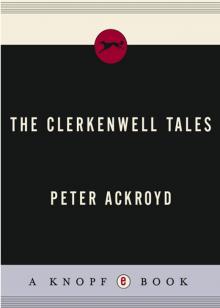 The Clerkenwell Tales
The Clerkenwell Tales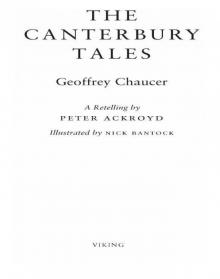 The Canterbury Tales
The Canterbury Tales J. M. W. Turner
J. M. W. Turner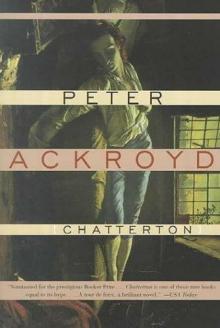 Chatterton
Chatterton The Canterbury Tales – A Retelling
The Canterbury Tales – A Retelling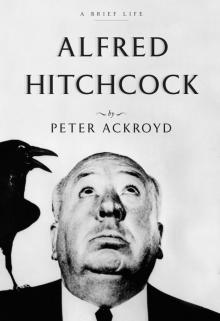 Alfred Hitchcock
Alfred Hitchcock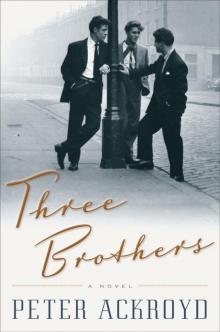 Three Brothers
Three Brothers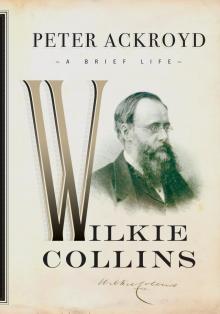 Wilkie Collins
Wilkie Collins Venice
Venice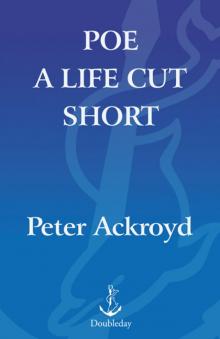 Poe
Poe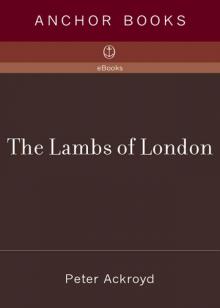 The Lambs of London
The Lambs of London London
London Queer City
Queer City Revolution, a History of England, Volume 4
Revolution, a History of England, Volume 4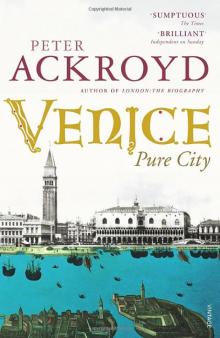 Venice: Pure City
Venice: Pure City Foundation
Foundation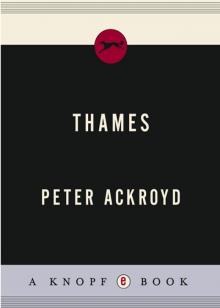 Thames
Thames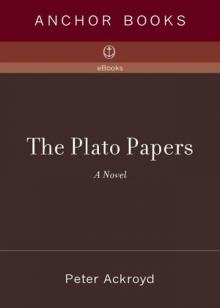 The Plato Papers
The Plato Papers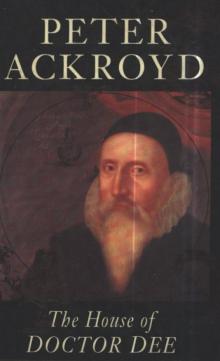 The house of Doctor Dee
The house of Doctor Dee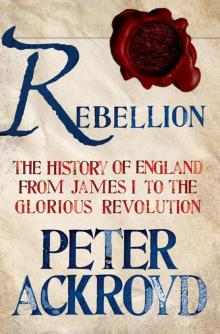 Rebellion: The History of England from James I to the Glorious Revolution
Rebellion: The History of England from James I to the Glorious Revolution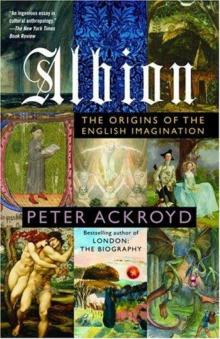 Albion: The Origins of the English Imagination
Albion: The Origins of the English Imagination The Fall of Troy
The Fall of Troy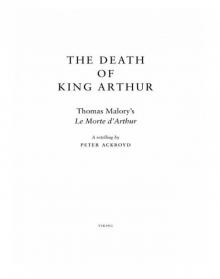 The Death of King Arthur
The Death of King Arthur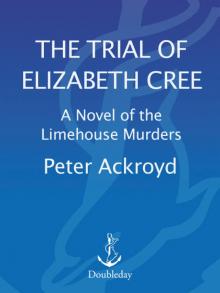 The Trial of Elizabeth Cree
The Trial of Elizabeth Cree London: The Biography
London: The Biography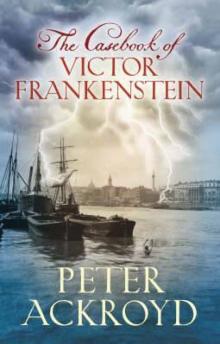 The Casebook of Victor Frankenstein
The Casebook of Victor Frankenstein Hawksmoor
Hawksmoor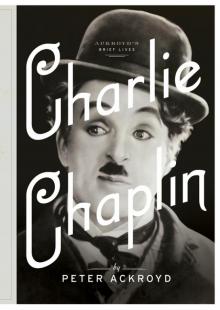 Charlie Chaplin
Charlie Chaplin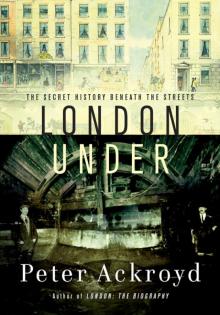 London Under
London Under